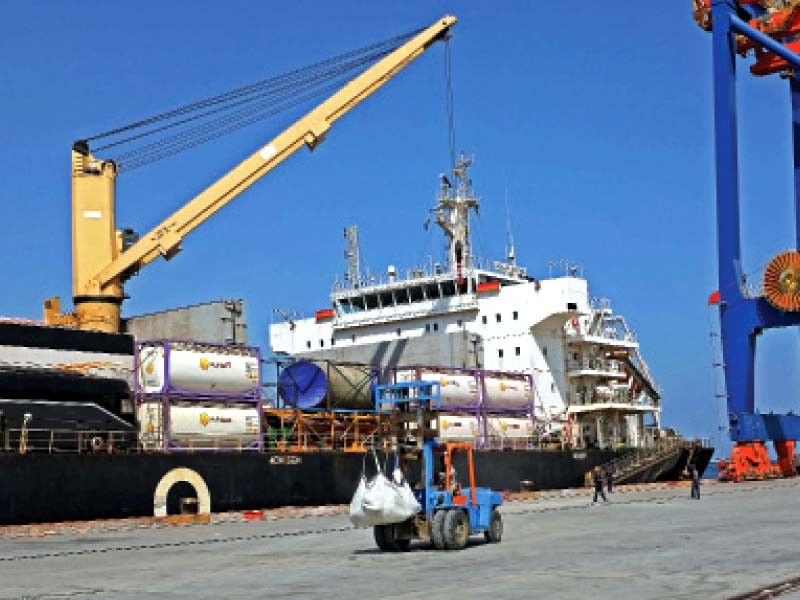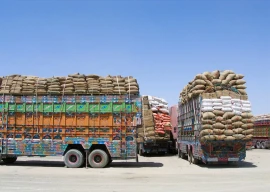
Adviser to the Prime Minister on Commerce and Investment Abdul Razak Dawood on Sunday said the government has fully implemented the Trade Diversification Policy and is currently seeing an increase in Pakistan’s product and geographical exports in the global market.
“So far, country’s exports of non-traditional products, including information technology, have grown by 60 percent in the last four months.”
The main objective of the government’s Trade Diversification Policy is to introduce new trade products of a country’s exports and to create new non-traditional markets at global and regional level to increase domestic exports, Dawood told APP here.
For the last seventy years, Pakistan exports have depended on the traditional markets of 10 countries, and local textiles have relied on only five markets, including the United States, China, European Union, the United Kingdom and Bangladesh, he said.
The adviser said that Pakistan is currently in the process of introducing new markets and new products in addition to traditional markets and traditional export products in which the present government has made great strides despite the Covid -19.
“In addition, new industrial units are being set up to promote product diversification to boost domestic exports in information technology, light engineering including tractors, fisheries and electronics and mobiles,” he said.
Dawood noted that the increase in the existing exports was a manifestation of good policy of the present government during Covid -19.
He said that like Association of South East Asian Nations (ASEAN), “We also need to strengthen our regional bloc in South Asian Association for Regional Cooperation (SAARC) and increase bilateral trade activities in the regional countries”.
The adviser stated that the government has reduced tariffs and duties on raw materials to zero per cent to increase the country’s exports. These include textile, fiber and jute where tariffs are discounted.
Replying to a question, he said Pakistan’s exports to Central Asian Republics (CARs) countries increased to $145 million in 2020-21 from $104 million in 2019-20.
For six months, from July-December 2021, these exports increased by 173% to $134 million from $49 million during the same period last year, he said, adding that the Ministry of Commerce’s Silk Route Reconnect initiative is now bearing results.
Read More: Trade with Kabul to immensely benefit K-P
To increase the trilateral trade volume with CARs, the adviser observed that the Pakistan-Uzbekistan Transit Trade Agreement was signed in 2021 at Tashkent and both the countries discussed opening banks in each other’s country. “We are negotiating Preferential Trade Agreements (PTAs) with Afghanistan, Azerbaijan and Uzbekistan,” he said.
Dawood maintained that for truck movement, the negotiations were at an advanced stage.
Responding to another question on Information Technology exports, he said there is a lot of scope to increase exports in IT from non-traditional sectors.
The current annual $2.5 billion IT exports are very low, “We now have an annual export target of $4 billion this year, he said.
Dawood said there was a need to promote export culture in the country at present and the government wanted to increase exports on priority basis.
“Pakistan’s economy has made significant progress reflecting a blend of stabilisation and structural reforms despite being challenged at the economic and geopolitical front and is moving on a positive growth trajectory,” he said.
“Micro Small and Medium Enterprises (MSMEs), that use e-commerce platforms, are around five times more likely to export than those in the traditional economy,” he added.
“The policy aims to pave the way for holistic growth of e-commerce in the country by creating an enabling environment in which enterprises have equal opportunity to grow steadily.”
He stressed that the way forward for Pakistan on the economic front is to focus on exports, specifically IT related exports.
While informing about the current export situation, he said because of prudent economic and trade policy of the government, Pakistan export target of $15.125 billion was achieved in the first half of FY 2021-22 from July-December.
The adviser said that Pakistan’s exports during December 2021 increased by 16.7% to $2.761 billion as compared to $2.366 billion in December 2020, showing an increase of almost $400 million.
The adviser said that there were indications that the growth in imports has started to decline. During December 2021, Pakistan’s imports decreased by $1 billion to $6.9 billion as compared to $7.9 billion in November 2021.
“During the first half of the current financial year, exports during July-December 2021 increased by 25% to $15.125 billion as compared to $12.110 billion during the corresponding period last year,” he said.
“Exports of fish and fish products, plastics, cement, fruits and vegetables, petroleum products and natural steatite increased in the last six months,” he added.
“In terms of market diversification, there was an increase in exports to Bangladesh, Thailand, Sri Lanka, Malaysia, Kazakhstan and South Korea.”
Dawood said for traditional sectors there was an increase in the exports of men’s garments, home textiles, rice, women’s garments, jerseys and cardigans and t-shirts.
“In terms of traditional markets, as compared to December 2020, Pakistan’s exports to United States, China, the Netherlands and Spain increased in December 2021, while exports to the United Kingdom, Germany, Afghanistan, Saudi Arabia, Russian Federation, Indonesia and Czech Republic decreased.”



































1714024018-0/ModiLara-(1)1714024018-0-270x192.webp)










COMMENTS
Comments are moderated and generally will be posted if they are on-topic and not abusive.
For more information, please see our Comments FAQ